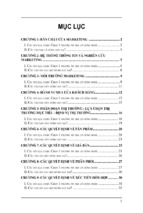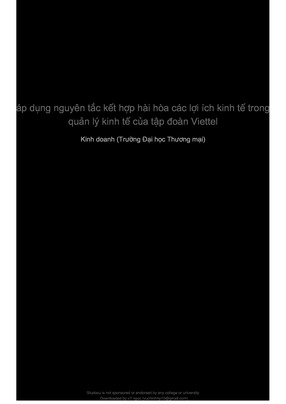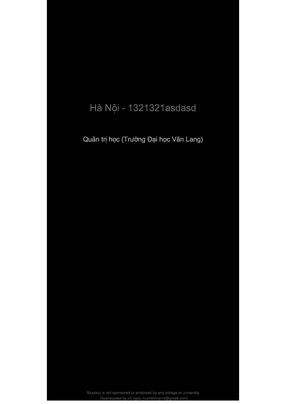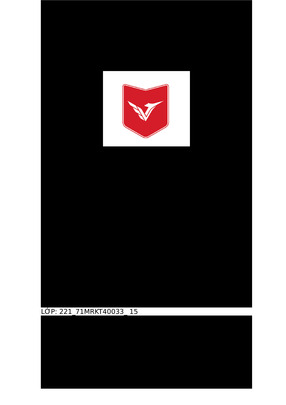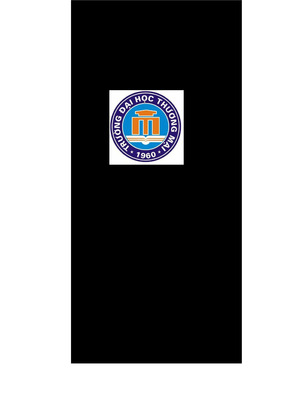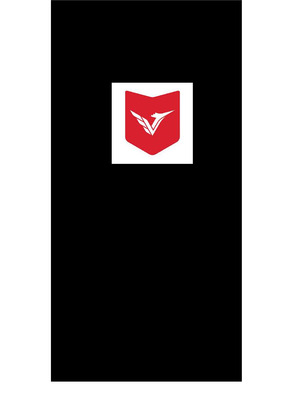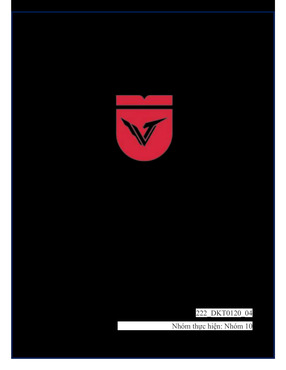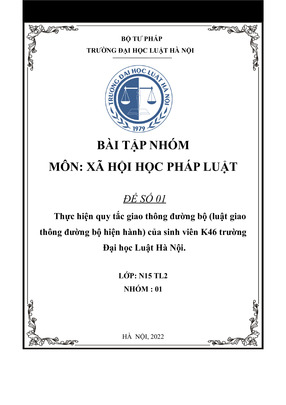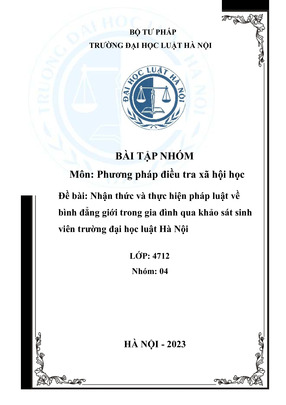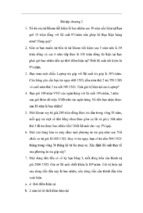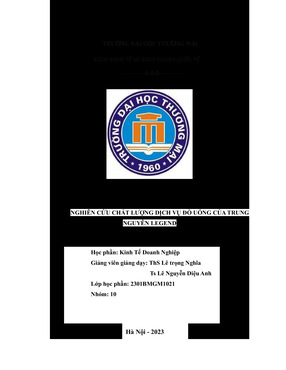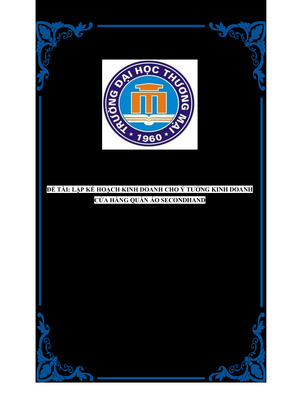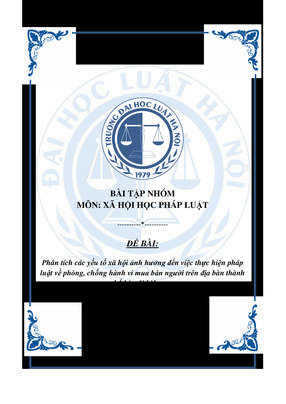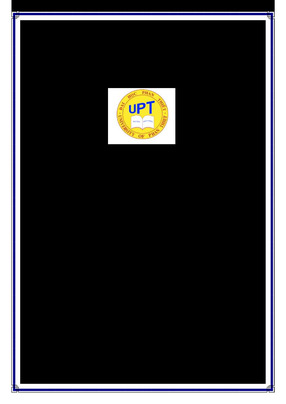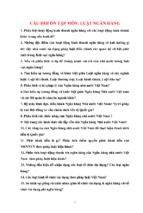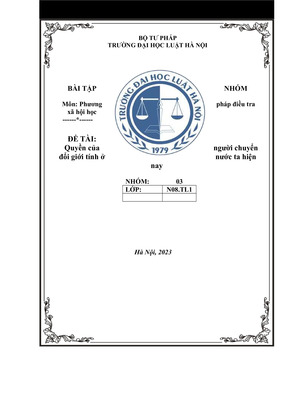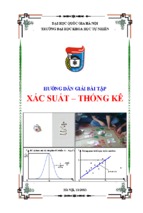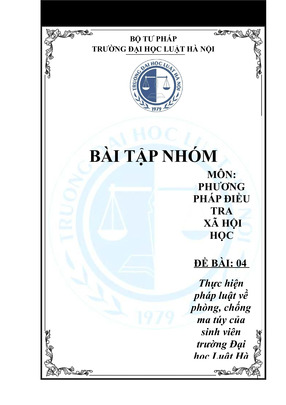THE PEOPLE’S COMMITTEE OF BINH DUONG PROVINCE
THU DAU MOT UNIVERSITY
ĐẶNG THỊ QUỲNH NGA
THE USE OF TRANSLATION STRATEGIES
TO TRANSLATE COHESIVE DEVICES
IN O’HENRY’S STORIES
INTO THEIR VIETNAMESE EQUIVALENTS
MAJOR: THE ENGLISH LANGUAGE
CODE: 8220201
MASTER THESIS
BINH DUONG – 2020
THE PEOPLE’S COMMITTEE OF BINH DUONG PROVINCE
THU DAU MOT UNIVERSITY
ĐẶNG THỊ QUỲNH NGA
THE USE OF TRANSLATION STRATEGIES
TO TRANSLATE COHESIVE DEVICES
IN O’HENRY’S STORIES
INTO THEIR VIETNAMESE EQUIVALENTS
MAJOR: THE ENGLISH LANGUAGE
CODE: 8220201
MASTER THESIS
Supervisor: TRẦN QUỐC THAO, Ph.D.
BINH DUONG – 2020
i
STATEMENT OF AUTHORSHIP
I herewith assure that I wrote the present thesis ―the use of translation
strategies to translate cohesive devices in O’Henry’s stories into their
Vietnamese equivalents‖ independently, that the thesis has not been partially or
fully submitted as graded academic work and that I have used no other means
than the ones indicated. No other person's work has been used without due
acknowledgment in the main text of this thesis. I declare that all the numbers and
data in this thesis are the result of my work.
Binh Duong, 2020
ĐẶNG THỊ QUỲNH NGA
ii
ACKNOWLEDGEMENTS
Foremost, I would like to express my sincere gratitude to my advisor Dr.
Trần Quốc Thao for the continuous support of my MA study and research, for his
patience, motivation, enthusiasm, and immense knowledge. His guidance helped
me in all the time of research and writing of this thesis. I could not have
imagined having a better advisor and mentor for my MA study.
Besides my advisor, I would like to thank the professors in English
Faculty at Thu Dau Mot University, for their encouragement, insightful
comments, and hard questions during my study there.
My sincere thanks also go to my colleagues in Binh Phu Secondary
School for helping me during the time I did my research. Especially the help of
Nguyen Tien Thanh in retesting the data in the thesis.
Besides, I really want to give my thanks to my classmates for encouraging
me a lot during studying periods, especially Lê Công Tường and Tạ Thủy Tiên
who supported me a lot in terms of materials and advices.
At last, I am extremely thankful for the supports of my family who are
always by my side. Especially, my parents encouraged me to overcome all the
challenges in my life.
iii
ABSTRACT
Translation is one of the biggest concerns in language learning in general
and English language learning in particular. Translation strategies are studied on
many different levels and aspects. Cohesive device (CD) translation is the wordlevel translation so it also has word-level problems in translation such as the
target language (TL) lacks an equivalent word, the source language (SL) is not
lexicalized in TL, two languages are different in forms, etc. CDs in English and
Vietnamese are also different in use. Moreover, with the word-to-word
translating habit of Vietnamese, it makes the translated text unnatural and
difficult to understand in some cases. Therefore, this study aimed to examine the
translation strategies of CDs in three O'Henry’s stories including An Unfinished
Story, The Furnished Room, and The Last Leaf into Vietnamese equivalents.
There were 1,617 CDs collected from three stories for research data. Document
analysis was utilized as the primary research instrument within this study. The
findings indicated that 300 CDs out of 1,617 (account for 18.5%) translated by
translation strategies. There were five strategies found including translation by a
more neutral/ less expressive word, translation by paraphrase using related
words, translation by paraphrase using unrelated words, translation by omission,
and translation by illustration. The frequency of these strategies reveals that
translation by omission is the most used and the least used strantegy is translation
by using a more neutral/less expressive word. The study also showed the
functions of these translation strategies in some specific cases. This study has
implications in terms of CDs translation usage for translation learning, teaching,
and practicing for teachers, learners, translators, and researchers.
Keywords: Cohesive device; short story; O’Henry; translation strategy;
iv
1
CONTENTS
ACKNOWLEDGEMENTS .................................................................................. iii
ABSTRACT .......................................................................................................... iv
CONTENTS ........................................................................................................... v
LIST OF ABBREVIATIONS .............................................................................. vii
LIST OF TABLES .............................................................................................. viii
LIST OF DIAGRAM AND FIGURES ................................................................. ix
CHAPTER 1 INTRODUCTION ........................................................................... 1
1.1.
Background of the study .................................................................... 1
1.2.
O’Henry’s short stories ...................................................................... 3
1.3.
Aims and objectives of the study ....................................................... 5
1.4.
Research questions ............................................................................. 5
1.5.
Scope of the study .............................................................................. 5
1.6.
Significance of the study.................................................................... 6
1.7.
Definitions of key terms .................................................................... 6
1.8.
The overview of thesis ....................................................................... 7
CHAPTER 2 LITERATURE REVIEW ................................................................ 8
2.1.
Introduction ........................................................................................ 8
2.2.
Short story .......................................................................................... 8
2.2.1.
Definition of short story............................................................. 8
2.2.2.
Characteristics in short story ..................................................... 9
2.3.
Language use in O’Henry’s short stories......................................... 10
2.4.
Cohesive device ............................................................................... 12
2.5.
2.6.
2.4.1.
Definition of cohesive device .................................................. 12
2.4.2.
Types of cohesive devices ....................................................... 13
Translation ....................................................................................... 19
2.5.1.
Translation definition............................................................... 19
2.5.2.
Types of translation ................................................................. 20
2.5.3.
Translation problems ............................................................... 21
2.5.4.
Translation strategies ............................................................... 24
Review of related studies ................................................................. 29
2.6.1.
Vietnamese studies .................................................................. 29
2.6.2.
International studies ................................................................. 31
v
2.7.
Summary .......................................................................................... 32
CHAPTER 3 RESEARCH METHODOLOGY .................................................. 33
3.1.
Introduction ...................................................................................... 33
3.2.
Research design ............................................................................... 33
3.3.
Materials .......................................................................................... 34
3.4.
Data collection procedures............................................................... 37
3.5.
Data analysis procedures ................................................................. 38
3.6.
Framework for data analysis ............................................................ 39
3.7.
Validity and reliability ..................................................................... 41
3.8.
Summary .......................................................................................... 42
CHAPTER 4 FINDINGS AND DISCUSSION .................................................. 43
4.1.
Introduction ...................................................................................... 43
4.2.
Findings ........................................................................................... 43
4.2.1.
Frequency of translation strategies .......................................... 43
4.2.2.
Types and functions of TSs ..................................................... 46
4.3.
Discussion ........................................................................................ 67
4.4.
Summary .......................................................................................... 71
CHAPTER 5 CONCLUSION AND IMPLICATIONS ....................................... 73
5.1.
Conclusion ....................................................................................... 73
5.2.
Implications ..................................................................................... 74
5.3.
Limitation......................................................................................... 75
5.4.
Recommendation ............................................................................. 76
REFERENCES ..................................................................................................... 77
APPENDIX 1 ....................................................................................................... 81
APPENDIX 2 ....................................................................................................... 82
APPENDIX 3 ....................................................................................................... 84
APPENDIX 4 ....................................................................................................... 93
APPENDIX 5 ..................................................................................................... 102
APPENDIX 6 ..................................................................................................... 105
vi
LIST OF ABBREVIATIONS
CD: Cohesive Device
TS: Translation Strategy
TL: Target language
SL: Source language
vii
LIST OF TABLES
Table 2.1. Demonstrative Reference Cohesion (Halliday and Hasan, 1976:38). .15
Table 3.1 Size of the Stories ................................................................................ 35
Table 3.2 Frequency of CDs used in three selected stories by O'Henry .............. 35
Table 3.3 Cohesive Devices (Halliday and Hasan, 1976).................................... 39
Table 3.4 Translation Strategies (Baker 1992) .................................................... 40
Table 4.1 Frequency of TSs used in translating CDs in three selected stories by
O'Henry ....................................................................................................... 44
Table 4.2 Cases of translation by using a related word to increase expressive
nuance and avoid stereotype translation ...................................................... 46
Table 4.3 Cases of Translating by related word to avoid duplication ................. 47
Table 4.4 Cases of translation by using a more neutral/less expressive word ..... 48
Table 4.5 Cases of translation by illustration translation with CDs that are the
alternative word ........................................................................................... 49
Table 4.6 Cases of translation by illustration translation with CDs that are not the
alternative word ........................................................................................... 51
Table 4.7 Cases of translation by illustration to adapt the target culture ............. 53
Table 4.8 Cases of translation by using an unrelated word to adapt the target
culture .......................................................................................................... 55
Table 4.9 Cases of translation by an unrelated word to increase the hieroglyphs 56
Table 4.10 Cases of translation by unrelated words to create a sense of closeness
with the reader ............................................................................................. 57
Table 4.11 Cases of Translation by paraphrase using unrelated words to increase
or decrease the level of expression .............................................................. 59
Table 4.12 Functions of TSs found in translating CDs in the short stories by
O'Henry ....................................................................................................... 66
Table 4.13 The charateristics of new found functions ......................................... 70
viii
2
LIST OF DIAGRAM AND FIGURES
Diagram 2.1 Types of personal reference cohesion ............................................ 31
Diagram 2.2 Types of Comparative Reference Cohesion................................... 32
Figure 3.1 Percentage of CDs used in three selected stories by O'Henry ............ 36
Figure 3.2 Occurrence of CDs used in three selected stories by O’Henry per 1000
words ........................................................................................................... 37
Figure 4.1 Percentage of TSs used in three selected stories by O'Henry ............. 45
ix
3
CHAPTER 1
INTRODUCTION
O'Henry is a famous writer in the 19th century. He wrote many stories for
newspapers at that age. His stories are believed to imply valuable moral lesson
and the language is easy to understand. In his stories, the language is used
abundantly, so it is a valuable learning source for English learners in both
language and culture. Therefore, as an English learner, I am interested to analyze
one element in the stories, which is cohesion. Cohesion is an important grammar
factor that is used to connect elements of a text to make it become unity.
However, it is difficult for Vietnamese learners to use cohesion correctly because
of the effect of Vietnamese-English translating habits when using English.
Hence, in this study, the translation strategies of cohesive devices (CDs) will be
allocated in a specific context to make this study be a useful material for learning
cohesion as well as in the translation area.
1.1.
Background of the study
Translation plays a critical role in global development. It is considered as
the way to exchange information between different language areas, and it helps
to share experiences, sciences and technology to people all over the world.
Translation includes both interpretation and written form. In translation, literary
work translation is one of the most popular types. In Viet Nam, there have been a
lot of foreign literary works translated into Vietnamese. They also appear in
education program. The literary works interest people of all ages. Thanks to the
various genres and topics, literary works become the hobby of many people in
their spare time. It gives a chance for Vietnamese people to access to the
international literature.
Due to its significant role, literary work translation is a big concern in
linguistics. There has been several research conducted on the problems of literary
work in many aspects. According to Ninda and Taber (1982:33) translation is a
process of ―reproducing in the receptor language the closest natural equivalence
1
of the SL message, first in terms of meaning and secondly in terms of style‖. It
means that translation is the process of changing the meaning of the SL text
utilizing an equivalent TL text. However, translation of literary text is a difficult
task. Therefore, the translator should be careful to use an appropriate strategy to
produce a good translation.
In terms of translation strategy, different translation theorists state
different translation strategies. First, Chesterman (1998) divides the classification
of strategies into three kinds: syntactic strategies, semantic strategies, and
pragmatic strategies. From another angle, Newmark (1988:45-47) suggested
eight strategies of translation which consist of word-for-word translation, literal
translation, faithful translation, semantic translation, adaptation, free translation,
idiomatic translation, communicative translation. Baker (1992:23-47) mentioned
eight strategies of translation in general: translation by a more general word,
translation by a more neutral/ less expressive word, translation by cultural
substitution, translation using a loan word or loan word plus explanation,
translation by paraphrase using a related word, translation by paraphrase using
unrelated words, translation by omission, and translation by illustration. A good
translation is usually used many different strategies.
A text that is considered to have a high level of consistency, coherence
and logic, the key element is cohesion. In literature as well as in linguistics, CD
is an aspect of the semantics which can be expressed and used variously in
different languages. CD is the set of linguistic means which can create a texture.
The texture is the basic unit in a text that create relationship between sentences
and paragraphs besides the semantic relations to make it more meaningful and
unitary. Without these units the sentences and paragraphs would be isolated and
not organized. Furthermore, cohesion occurs where the interpretation of some
elements in the text depends on that of another. Therefore, texture of the text
makes a text distinguish from a non-text (Halliday and Hasan, 1976:2) In other
words, cohesion makes any text more meaningful as showing the relationship
between sentences and parts of the text allows the reader to easily identify the
2
exact meaning of the text. Thus CDs unify the whole text, and hence, the more
CDs, the more powerful the text is. The text is considered as powerful because
cohesive markers hold and linking the content of the text together to be as one
piece of information. Hence, the translation of CDs must be paid attention in the
translation of a literary work from a language into another language. According
to Halliday and Hasan (1976), cohesion includes grammatical cohesion and
lexical cohesion. Grammatical cohesion is the connection between grammatical
features across sentence boundaries, which consists of reference, substitution,
ellipsis, and conjunction. Lexical cohesion is the connection of vocabulary link
parts of the text together, which contains reiteration and collocation. However,
some translators do not pay attention to the CDs during the translation process,
making the translation awkward or meaningless so that readers do not feel the
meaning of the writer in the original text.
From the above issues, this study was conducted for the following reasons.
Firstly, CD plays an important role in languages, so it is also a factor to consider
when translating into other languages. Secondly, there have been a lot of
translated works into Vietnamese, and also there have been a lot of research on
translation in many different fields, with many different levels such as sentence
level, phrase level, idiom, but there has not found any study on translation of
CDs into Vietnamese. Therefore, this study was conducted to clarify whether
cohesion in written text can contribute to the matter of translation. Finally,
O'Henry's short stories are quite popular in Vietnam, they can be used as a
reference for the translation teaching process.
1.2.
O’Henry’s short stories
The O'Henry short story topic, particularly diverse, reflects somewhat the
diversity of contemporary American social life. The context in which the writer
built composition is very abundant: bustling New York City, immense farms in
Central and Southwest America, the newly founded pristine towns of gold
seekers. The art space in the story of O'Heniy is mostly the narrow, dark, stuffy
space of the rooms, the doors, the small corner of the park, the zigzag streets, the
3
pieces of the sidewalk (The skylight Room, The Green Door, The Last Leaf) and
just a little space spread over mountains, meadows, farms, villages (Christmas by
injunction, A chaparral prince). The world in O'Henry's artistic conception, the
world that the writer re-created in the short story is the vibrant bustling world of
money (An unfinished story) the gloomy dark world of the miserable life
misfortune, Love Story, The furnished room) and the warm, bright world of love.
O’Henry's characters are quite diverse: capitalist bosses, senior officials,
and police are also featured in O’Henry's work. Most are still poor, ordinary
people, earning a living by many different jobs: officials, secretaries, journalists,
painters, musicians, actors, doctors, pharmacists, salespeople, barbers, gold
seekers and even the wanderers, thugs, bandits, criminals. The incredibly vast
world that O’Henry lived in which provided material for his story. Moreover,
great fiction has enabled the writer to create diverse situations
In O'Henry's short stories, excepting humor, adventure, romance, readers
can find many works imbued with reality, kindness and progressive concepts of
the writer. O'Henry reflects the obvious truths of contemporary American
society: the opposition between the two worlds - the world of the rich and the
world of the poor; monetary power with its positive side and its damaging
effects. The writer's attitude always forwards to the poor, praising the kindness
and love of those who have the same plight.
O'Henry's artistic language is also unique. Readers can come across a very
clear narrative style. Slang, local accents, idioms are used by O’Henry in short
stories with certain artistic uses. O’Henry's description was flexible, sometimes
direct, specific as a strict realist; sometimes he exaggerated, personified or used
comparisons from simple to elegant.
However, in this paper, O’Henry's story will be used as a data source to
examine CDs in them without performing an analysis of the story's content or
characters.
4
1.3.
Aims and objectives of the study
This study is to examine the translation strategies used to translate CDs in
O’Henry’s selected short stories into Vietnamese equivalents. The following are
the specific objectives of the research:
To examine the types of translation strategies used to translate CDs in
O’Henry’s selected short stories into Vietnamese equivalents;
To discover the most common types of translation strategies used to
translate CDs in O’Henry’s selected short stories into Vietnamese
equivalents;
To analyze the functions of translation strategies used to translate CDs in
O’Henry’s selected short stories into Vietnamese equivalents.
1.4.
Research questions
To achieve the aforementioned objectives, the following research
questions must be addressed:
1) What types of translation strategies are used to translate cohesive devices
in O’Henry’s selected short stories into Vietnamese equivalents?
2) What are the most common types of translation strategies used to
translate cohesive devices in O’Henry’s selected short stories into
Vietnamese equivalents?
3) What are the functions of translation strategies used to translate cohesive
devices in O’Henry’s selected short stories into Vietnamese equivalents?
1.5.
Scope of the study
Here the TSs used in translating CDs in the stories are tried to explore.
Moreover, the frequencies of the TSs are examined. Lastly, the function of TSs
used are analyzed. The source of research’s data is CDs collected from three
short stories by O’Henry including The Furnished Room, An Unfinished Story,
and The last leaf presented in Selected Short Stories From O.Henry Stories
published by The Odyssey Press Inc.; and their translations in tuy n t p O.Henry
published by Literary Publisher (2017) căn phòng đầy đủ tiện nghi translated by
5
Mạnh Chương, m t c u chuyện d dang, and chi c l cuối c ng both translated
by translated by Ngô Vĩnh Viễn.
This study mainly focuses on exploring the types of TSs, examining the
frequencies, and analyzing the function of TSs used to translate the CDs. It is
emphasized that it only examined the CDs, how the other parts of the sentence
translated are ignored. In addition, the other aspects of O’Henry stories like
figurative language, content, plot, character are not paid attention. Therefore, it is
decided that the study is conducted by document analysis.
1.6.
Significance of the study
The current study addresses the translation strategies used in translating
CDs in short stories by O’Henry. The findings of this study are expected to
provide information as a learning reference to help English learners understand
more clearly about cohesion translation.
The findings of the study can be very useful in the area of translation. The
significance of the study is beneficial as the material to improve the vocabulary
of cohesive for Vietnamese – English learners.
This study is expected to support and enrich for data sources of analysis
about O’henry and sets the premise for the future studies about the short stories
by O’Henry as well as the translation.
For teachers who teach literature translation, it is a helpful teaching
material to teach CDs, translation strategies, and to contrast the use of cohesion
in English and Vietnamese.
1.7.
Definitions of key terms
Cohesive device refers to the connection between the related elements
within a text to make it unity.
Short story refers to a short, narrative prose that is usually centered on one
single event
Translation in this study means a process that the translator conveys the SL
to other languages.
6
Translation strategy was defined as a set of processes used to solve the
difficulties of language and culture during doing translation tasks.
Vietnamese equivalent in this study refers to a Vietnamese word that is
equal in meaning to an English word.
Source language: the language in which the original text is written.
Target language: refers to the language into which the original text is
translated.
1.8.
The overview of thesis
This study consists of 5 chapters. Chapter 1 presents the background of the
study, research questions, objectives of the study, significance of the research
and overview of the research. Chapter 2 shows the definition of terms such as
short stories, cohesion, translation as well as translation strategies, and the
overview of related literature and previous studies. Chapter 3 introduces the
methodology with seven main parts: the research design, the the materials of the
research, data collection procedures, data analysis procedure, frame work for data
analysis, and validity and reliablity. Chapter 4 includes the description of data,
analyzing data, the contrast with Vietnamese translation, some implications and
recommendation for learning translation. Chapter 5 draws some conclusions
from the study.
7
4 CHAPTER 2
LITERATURE REVIEW
2.1.
Introduction
In this chapter, five main parts are discussed to present the theoretical
background and previous studies for the thesis. Firstly, definitions of short story
and its characteristics are taken into consideration. Secondly, it shows definitions
of CDs and types of CDs basing on the theory of Halliday and Hasan (1976). The
third presents what related to translation consists of translation problem and
translation strategies which comprise the framework of Newmark (1988),
Chesterman (1998), and Barker (1992). Fourthly, the language in O'Henry's
stories are reviewed. Last but not least, a summary of previous studies is
provided to learn some useful experiences of pioneer and identify the gap of
researches.
2.2.
Short story
2.2.1. Definition of short story
Although short story has long existed in literature, and has been studied by
researchers on many aspects, some researchers have come up with definitions for
short stories. One of the earliest writers concerned about short story, Poe (1896)
considered the time of reading a story is also to distinguish it with other types of
literary works, which was mentioned in The Philosophy of Composition of E. A.
Poe (1896:164) ―If any literary work is too long to be read at one sitting, we must
be content to dispense with the immensely important effect derivable from unity
of impression- for, if two sittings be required, the affairs of the world interfere,
and everything like totality is at once destroyed‖. Poe believed that there was
something special in a single session of reading and that short stories and poems
of a certain length could capitalize on that special quality. Not concern in the
time of reading, Jones (1968) defined a short story as an imaginative statement of
feeling that feeling is created or imagined. Short story is a short piece of fiction
aiming at unity of characterization, theme, and effect. According to the Oxford
8
Advanced dictionary, a short story itself is defined as a story, usually about
imaginary characters and events that are short enough to be read from beginning
to end without stopping. Yatma (2015:3) cited ―Short story is the story less than
10,000 words to give singular image and focus on one actor in a situation. Short
story is one of the literary forms that are a work of fiction that is usually written
in prose, often in narrative format and usually focuses on only one incident, has a
single plot, a single setting, a small number of character, and cover a short
period, style". In short, despite being interpreted in different ways, short story is
generally a short, readable in a short time prose. From the above mentioned, it is
considered that the definition of Yatma is the most specific and suitable for this
study.
2.2.2. Characteristics in short story
There are many types of literature such as drama, poetry, novel, short
story. Compared to other forms of literature, poetry and short stories both have a
relatively short number of words, readers can read all at once. However, poetry
has rhyme, rhythm, and couplet. In addition, while dramas or novels often have a
complex plot, with many thrilling details and many characters in the story, a
short story is simpler. It usually has a simple plot, focusing on one character.
According to Southey (2009), there are five elements in short story:
1. Character: There are one or a couple of characters in a short story. It
always has a protagonist and sometimes antagonist. The characters
may be people or even animals.
2. Setting: The setting of a short story is the time and place in which the
story takes place. It is often related to the theme. The writer often uses
descriptions of landscape, scenery, buildings, seasons or weather to
provide a strong sense of setting. Knowing about the context of the
story allows readers to have a good connection to the character to
follow the story better.
3. Plot: The plot is what the writer arranges for his characters to develop
his basic idea. It is a logical sequence of events including beginning,
9
middle, and end. There are five essential parts of plots: 1) introduction,
2) rising action, 3) climax, 4) falling action, 5) denouement. A short
story usually has one plot.
4. Conflict: In a short story, there are two sides, one protagonist and one
antagonist. The conflict in short story is struggle between the
protagonist and the other party, sometimes the fight with some people,
or the fight with nature, the fight with society or even the fight with the
character his own.
5. Theme: The theme or subject is the central idea or belief in a short
story that the writer is trying to convey. The theme may be the writer’s
thought about a topic or view of the short story that usually points to
what the writer is saying and may use various figures of speech to
emphasize the theme, such as symbol, simile, metaphor, hyperbole and
other.
In general, because of the single theme and the limitation of length, short
stories tend to begin and end-all of a sudden, there is no gap for extending or
developing the plot, and even the only main character may never be fully
developed.
2.3.
Language use in O’Henry’s short stories
O’Henry, the pseudonym of William Sydney Porter (1862-1910), is a
famous American short story writer. O’Henry wrote several short stories such as
Twenty Year, Cabbages and Kings, some of which are famous stories for
example The Last Leaf, The Gift of the Magi, The Skylight Room, etc.
O’Henry used many techniques in his stories such as narrative, surprising
ending, allusion, etc. The narrative method appeared in most of his work since he
wrote about life around him, he put people around him into his stories so that
they could play the main characters in his stories. In his stories, he let the readers
think that they have the stories figured out but in fact, they did not. He always
finished the story surprisingly.
10
- Xem thêm -


